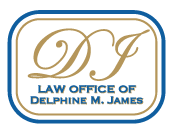Why Hire an Attorney?
Although you can use self-help websites to file your IP for a fraction of the cost, an attorney can help you sort out your rights. If your trademarks, copyrights, and patents are not filed correctly to protect your business, then there is essentially no protection.
Patents
What are Patents?
A patent protects a device, method or article of manufacture that is new and non-obvious. An issued patent provides the patent owner the exclusive right to prevent others from making, using, selling, offering for sale, or importing patented invention. This is through court. Specifically, ideas are protected through patents.
What Can be Patented?
What Cannot be Patented?
An obvious device, process, composition or article of manufacture in the field or industry of the invention
Trade Secrets
What are Trade Secrets
Copyrights
What is a Copyright?
What Can be Copyrighted?
- Musical works – expression written in a combination of melody harmony and rhythm; this copyright covers the sequence of the musical composition.
- Literary works – is an expression in words, numbers that is fixed in a physical medium such as books, periodicals, or disk.
- Dramatic works – is an expression of a dramatic play which includes the music such as —i.e west side story.
- Pantomimes works – dramatic work expressed without words.
- Choreographic works – recorded movements of a dancer without words.
- Pictorial, graphic and sculptural works – two or three dimensional visual arts, charts, diagrams, models, or technical drawings.
- Motion pictures and other audio visual works – succession of related images including sounds.
- Sound recordings – series of musical, spoken or other sounds not including motion picture or other audio visual works; there is a distinction between musical work and a sound recording; a Sound recording is the recorded performance of the musical works.
What Cannot be Copyrighted?
- A work that is in Public domain
- A Collection of Facts
- Names, titles, slogans and short phrases
- Ideas, procedures, processes, systems, methods of operations, concepts and principles
Trademarks
What is a Trademark?
A trademark is anything that functions to identify its owner’s goods or services. It becomes the brand of the product. A trademark or service mark can be any distinctive design, picture, emblem, names, letters, numbers, graphic designs, images, colors, shapes, sounds, smells, logo, wording (or combination), or any combination of these foregoing items. A trademark is affixed to goods for sale to identify the manufacturer as the source of the product. A service mark is advertised in brochure with a description of the services. Trademarks and service marks are important tools that a business uses for marketing, franchising, and branding of its goods and services. Some of the famous trademarks are Yahoo, Google, Kodak, Coca-Cola, Microsoft, IBM, and McDonald’s. A business obtains rights through continuous use of its trademarks. Trademark rights are territorial in nature and you must be the senior use to claim priority of use. A trademark can be registered federally or in the state of use. Only marks that are used in interstate commerce can be federally registered. Trademark rights last as long as they used. Ownership is claimed through use of the mark.
What Cannot be Trademarked?
- Merely descriptive of the goods – the mark “immediately conveys” the ingredients, qualities, or characteristics of the goods or services with which it is used.
- The generic name of the goods or services – conveys the name of the product or service itself and should be freely available to all who wish to use it.
- Geographically Descriptive – bars registration of a mark that is “primarily geographically descriptive” of the goods or services (i.e. convey a description of where the goods or services are located)
- Deceptively Mis-descriptive or Deceptive Marks – bar registration of mark that falsely indicates an ingredient, quality, or characteristic of the goods or services.
- Geographically Deceptively Mis-descriptive – bar registration of a mark that would make consumers believe the goods or services do originate from the place indicated in the mark and the goods or services in fact do not.
- Immoral or Scandalous Matter – bar registration of a mark that “consists of or comprises immoral scandalous matter.”
- Disparages, Falsely Suggests a Connection, or Brings Into Contempt or Disrepute a Person, Institution, Belief, or National Symbol – bars the registration of a mark that disparages, falsely suggests connection with, or brings into contempt or disrepute any person (living or dead), institution, belief, or national symbol.
- The Name, Portrait, or Signature Identifying a Particular Living – bars the registration of a mark that disparages, falsely suggests connection with, or brings into contempt or disrepute any person (living or dead), institution, belief, or national symbol.
- Primarily Merely a Surname – bars registration of a mark that is merely a surname.
How Do IP Protect Designs
Copyright Protect Designs
Trademark Protect Designs
- Identify Source or Brand of the product
- Name or logo of Product
- Total Image of the product (i.e. Design and Packaging)
Patent Protect Designs
IP Protection of Software
How are they Protected?
Trademarks Identify:
- Source or Brand of the software product
- Total Image or packaging of the product
- Contracts to support Manufacturing and Development of the software
- Licensing of Software
Global IP Protection
International IP Protection
- A copyright registered in US can be protected in other countries through the Berne Convention
- A registered trademark in the US can be registered in other countries using the Madrid Protocol
- A patent can be registered in other countries directly, through the patent cooperation treaty, or through the patent prosecution highway.
